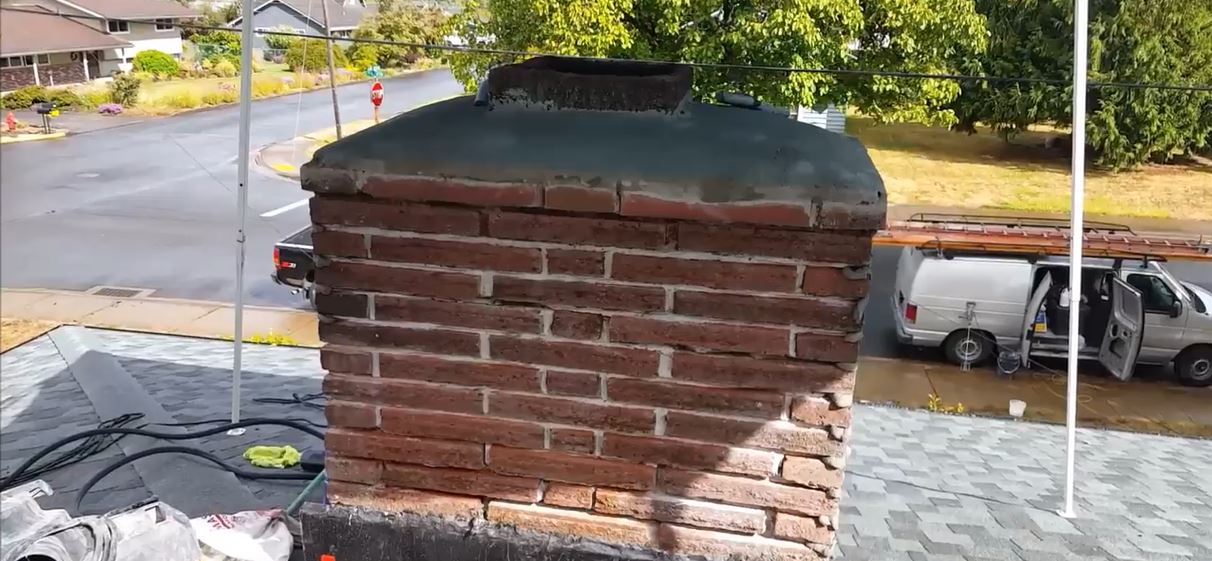How To Remove A Wild Animal In The Chimney

If your home has a chimney, then you need to be careful to make sure that wild animals cannot get inside it. Not only will animals in your chimney make it impossible to use your fireplace, but they can also lead to other issues, such as disease, damage, noise, or smells. Depending on the wild animal taking up residence in your chimney, it will be fairly easy to get it out, although sometimes you may need to hire a professional to help you.
Check If It's Stuck Or Denning
The first step to getting a wild animal out of your chimney is figuring out whether the animal fell in and got stuck or is living there as a choice. The easiest way to tell the difference is by listening. Animals that are stuck tend to make more frantic noises, scratching or flapping their wings repeatedly. Those who are denning, on the other hand, will make more regular noises. You may also hear multiple animals, including babies, in the case of denning, while a trapped animal will typically be alone. The process of removing the animal will be slightly different if they are trapped or denning, but still follows the same basic steps.
Don't Smoke It Out
The most important thing to remember when removing a wild animal from your chimney is not to smoke it out. In the case of a trapped animal, they will not be able to climb out, whether or not there is smoke. In the case of denning animals, the mother would have to leave the babies behind. In either case, you will be killing innocent animals and leaving yourself with the hassle of trying to remove a dead animal from your chimney.
Provide Escape Route
If you are pretty sure that the wild animal in your chimney is trapped, getting them out may be as simple as providing an escape route. Get a rope that is at least three-quarters of an inch thick and lower it down the chimney. Squirrels or other similarly nimble animals will be able to climb up the rope and leave the chimney. You may have to be patient and wait a little bit for the animal to leave, but it should work.
Encourage It To Leave
Whether you provide a trapped animal with an escape route or have a nesting animal, encouraging it to leave via noise or light can work. Wild animals tend to be spooked by humans and our sounds, so making some noise may be enough to get it to leave. Sometimes, shining a bright light up through the fireplace will also work, but that depends on the animal. You can also opt for an odor-deterrent of some sort, such as ammonia to encourage the animals to leave.
Catch Then Release
In some cases, you may have to set a trap for the animal within your chimney. Always opt for a humane live trap. Once you catch the animal, seal up the chimney so they cannot re-enter it and then release them outside. The key to this method is ensuring that you select a humane trap and that all animals are caught. Before trapping any animal, check your local regulations as some areas ban this method for particular species.
Remove Babies After Mother
As long as the wild animals in your chimney are not part of a protected species that cannot be trapped, you will want to be sure to get the babies out of the chimney after the mother has left (either by trapping or due to noise). In most cases the nest where the babies are will be within reach when you reach your arm up in through the fireplace.
Hire A Professional
It is possible to remove a wild animal in the chimney yourself by following the above directions. If you are having issues or simply want to be sure that you follow all local regulations and remove all the animals, you can choose to hire a professional. They should be able to quickly identify whether the animal is trapped or nesting and what type of animal it is. Based on this information, they will be able to safely and humanely remove the wild animal and help you prevent more from entering your chimney in the future.
Prevent It From Happening Again
After the animals are out of your chimney, you need to make sure that they won't come back and neither will any other animals. This involves installing a chimney cap to close the top of your chimney. These typically also include wire netting which wraps around the cap to prevent animals from entering that way as well. Either a wildlife expert or a chimney expert can help you select the right chimney cap. Also make sure that your chimney damper is closed when not in use so even if an animal enters your chimney, it won't get inside your home.
Read the Pest Wildlife Home Page page for helpful information and to learn more about How To Remove A Wild Animal In The Chimney

